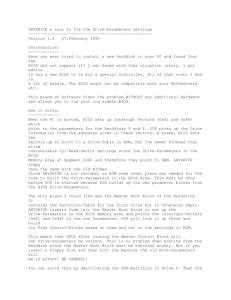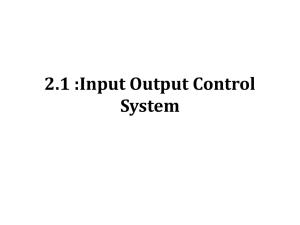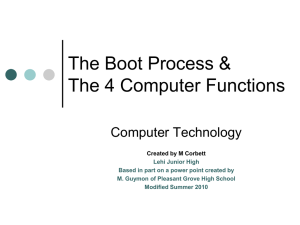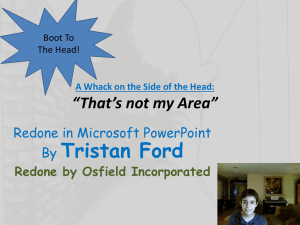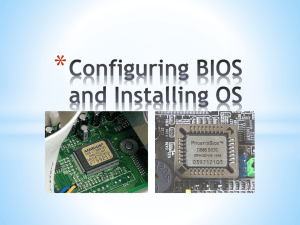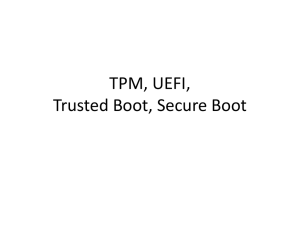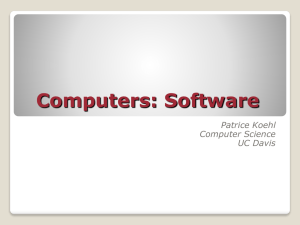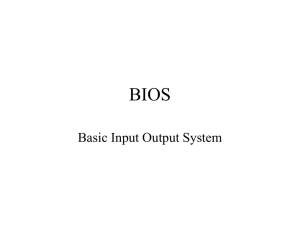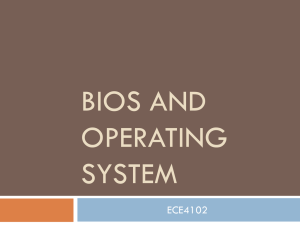Slide 1
advertisement
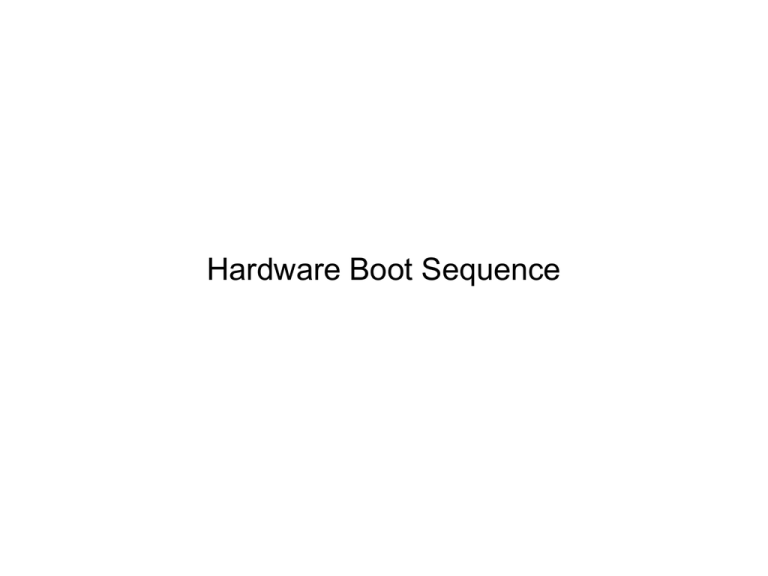
Hardware Boot Sequence Vocabulary BIOS = Basic Input Output System UEFI = Unified Extensible Firmware Interface POST= Power On Self Test BR = Boot Record (aka MBR) BC = Boot Code (aka MBC) GUID = Globally Unique Identifier GPT = GUID Partition Table BIOS Instructions used to start the computer from a cold start. (power off to power on). The BIOS instructions are written on non-volatile RAM. EEP-ROM is the common media choice for the BIOS, installed on the motherboard. The BIOS instructions are based on the chip-set installed on the motherboard BIOS The BIOS primary functions are Issue the instructions for starting the hardware at boot time. Load the OS from the boot device. Hardware Boot Sequence Turn on the power switch All memory and cache is empty at startup. A reset signal is generated by the chipset to the CPU until the power is ready. The CPU powers up and reads address xFFFF0 from the ROM. This contains a jump instruction to the start of the BIOS instructions. POST The POST (Power On Self Test) Provide power to the motherboard-speaker This allows error-code signals to be broadcast by the mobo-speaker when errors are detected Test if components on the motherboard are receiving power and functioning as intended. Hardware Boot Sequence Video and keyboard are activated early in the boot sequence. (video start instruction in ROM address is xC000) Other devices are activated like the disk drives, optical drives, sound-card, NIC, USB bus, etc. BIOS setup becomes available for the user. BIOS: User Interface There is a curses based user interface that allows: a)Selection of a boot device b)Setting the system clock c)Configuring hardware (includes enabling or disabling some devices) d)Setting passwords for booting, & the UI, etc. e)Also shows access to some system config information: memory size, disk size, etc. BIOS Completion Memory count Search for the OS Boot device Optical drive USB device Network device HDD HDD Boot Sequence If the HDD is the boot device then, ... HDD Boot Sequence The BR is read from the first cylinder, first track, first sector. The BR contains the BC (boot code) and a partition table. HDD Boot Sequence The boot code will do one of two things when executed: 1. Load a boot loader (GRUB, LILO, MS-BM) 1. Allows one to choose from different OSes or different versions of the same OS. 2. Load the OS if no boot loader is available. Partition Table The PT contains information about 4 primary partitions. Only one of the 4 primary partitions is designated as the active partition The active partition contains the OS for booting. One of the 4 primary partitions can be designated as the extended partition. The extended partition can be divided into additional logical partitions. BIOS/UEFI In the beginning there was the BIOS Intel creates the Extensible Firmware Interface in 1998 UEFI now supersedes EFI – UEFI can run on-top-of the traditional BIOS or in place of the BIOS. BIOS/UEFI BIOS is often used to describe UEFI Modern OSes allow backward compatibility between the traditional BIOS boot record and the UEFI GPT. GPT Globally Unique Identifier – This is required to allow a file system to exceed 2TB. The 2TB limit is a result of limitations of the original BR partition table (Each partition has only16 bytes of storage in the partition table.)

